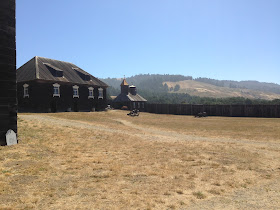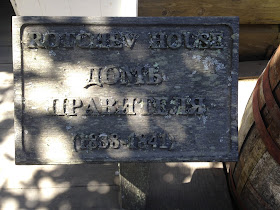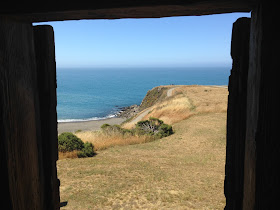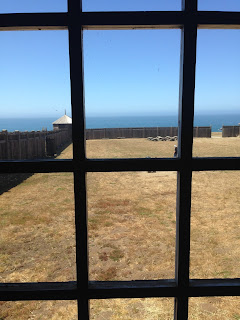Walking Up:
The main courtyard:
Rotchev House: House of the last commandant of the fort and the only original surviving structure:
Out the front gate to the Pacific Ocean. The path goes down to a bay:
Inside the courtyard:
Inside one of the two blockhouses:
Cannon:
Orthodox Church. It is still occasionally used;
Inside Kuskov House, the residence of all commandants prior to Rotchev:
Armory (For Reverend Paul and Glen):
These are a view of what the trading store would have looked like. Keep mind there was probably nothing like this for several hundred miles in any direction:
From the window of the other blockhouse:
Outside the Fort:
A reconstruction of one of the two windmills at the fort (these were the first windmills in California). This is a hand built reconstruction of Russian Pine by Russian craftsmen:
As you can guess from the amount of pictures, Fort Ross is just about my favorite state park in California. I have always felt that this period of time, the intersection of Native American, Russian, and Spanish/Mexican cultures was one of the greatly unknown and underinvestigated parts of California history





























What a fine restoration they did, TB. I loved the armoury and all the rest of it too. I knew the Russians were up in Alaska but didn't think their sphere of influence reached that far south. I could get lost in a place like that.
ReplyDeleteIt really is a great restoration Glen - and a really neglected part of pre-US California History. They have a Living History Day every July (which sadly, we missed). Some day I will make it there.
ReplyDelete